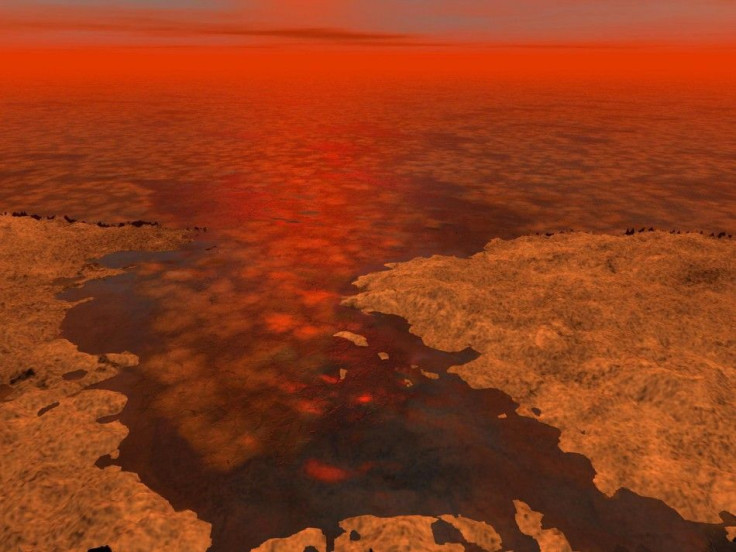Two 'Magic Islands' Appear On Saturn's Moon, Titan

In July 2013, astronomers found a bright feature in the Ligeia Mare sea on Titan, Saturn's moon, through photos captured. They named the strange feature "magic island." The island that was seen glistening in the sea seemed to vanish after a while.
Huffington Post wrote that two of the magic islands seemed to have appeared in the largest sea in Titan called Kraken Mare. The objects were observed in photos that were captured by NASA's Cassini spacecraft. At the Division for Planetary Sciences Meeting of the American Astronomical Society in Arizona, the discoveries were revealed.
A researcher at MIT and a member of the Cassini team, Dr Jason Soderblom, told National Geographic that the "islands" could be waves or something more solid. He continued they were certain it was something that was reflecting from the surface.
The original discovery of the islands was noticed through only one instrument, but the discovery of the two new islands were captured by two instruments. The two instruments are Cassini's Visible and Infrared Mapping Spectrometer because of which the scientists are given the opportunity to study the islands with the help of two wavelengths. The access of the two wavelengths will help them reduce the chances of optical interference.
The Cassini mission was studying the sea in Titan to learn about the way the oceans work there. Apart from the water bodies on Earth, Titan is the only other body in the solar system that is known to have it as well. The lakes and oceans in Titan are different from those in the Earth because they are filled with hydrocarbons unlike the ones in our planet, reported Daily Mail.
In addition to finding the islands, the research team had made attempts to find the depth of the Kraken Mare sea. The research team found that it had a depth of about 66 to 115 feet. In January, the probe will try capturing the depth of Punga Mare, which is the third largest ocean in Titan. According to NASA, the Cassini spacecraft is scheduled to take a trip to Ligeia Mare, where the original island was seen in January, but there is no schedule of it going to Kraken Mare for further investigations of the newly discovered islands.




















